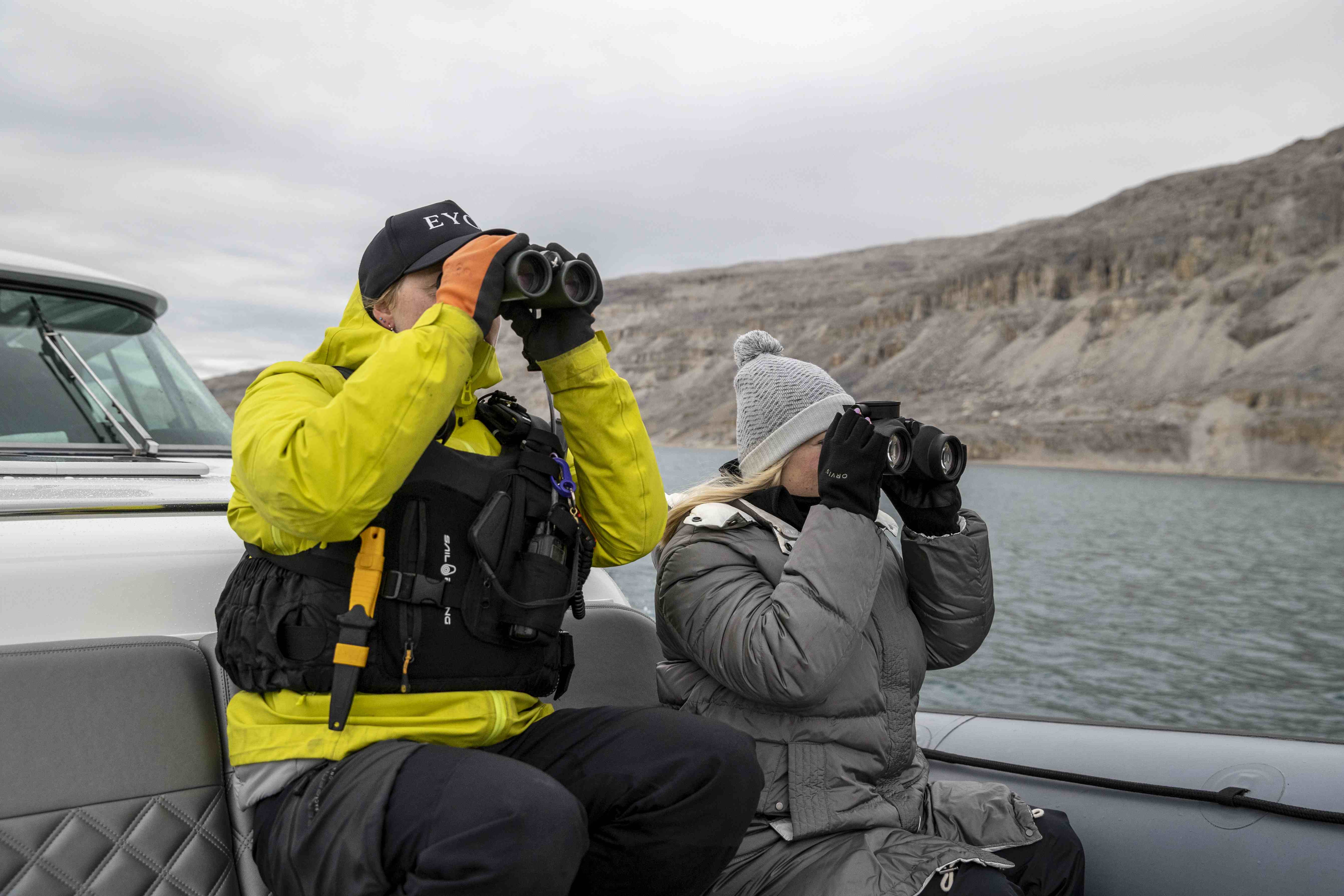Planning an expedition with EYOS? Get ready for the journey of a lifetime, from breathtaking views of killer whales in the polar regions to tropical treks through dense rainforests. But before you set sail, there’s the all-important question of what to pack. We’ve put together a list of essentials you won’t want to forget. These items might seem small, but they can make a world of difference on your trip — adding a layer of comfort and convenience. Think of this as your gear survival kit, the MVPs that will turn a great adventure into an unforgettable one.

-
Binoculars: Your Window to the Wild
Whether you’re cruising along the Antarctic Peninsula or navigating the rainforests of Papua New Guinea, wildlife sightings can happen when you least expect them. That’s where a good pair of binoculars comes in. Imagine spotting a breaching humpback whale in the distance or a rare endemic bird species flying through the canopy. The right binoculars will bring these moments into sharp focus, helping you feel closer to the action and observe the natural history of the wildlife on your expedition.
- Things to Consider:
Magnification Power: Binoculars are described by two numbers, “10 x 50” for instance. The first number is the magnification and the second is the diameter of the front lens in millimeters. A magnification of 10 or 12 is about as much as most people can manage to hold without shaking and is generally the most useful. Don’t simply choose the most powerful binoculars you can since these are hard to hold steady without a tripod or something to brace against. Consider weight, as you will want to bring these with you during walks ashore. 8×42 or 10×42 are popular choices.
Comfort and Usability: Consider models with adjustable eyecups and a wide field of view for easy tracking of fast-moving animals and for briding. You’ll also want something lightweight enough to hang around your neck for hours without causing strain.
Durability: Look for a waterproof, fog-proof pair designed to withstand the harsh conditions of the wild. Trust us, you don’t want moisture fogging up your lenses at the most crucial moments.

-
Dry Bag: Keep Your Essentials Safe and Dry
From misty boat rides to rain-soaked hikes, there’s no escaping the elements on an expedition. Enter the dry bag—a seemingly simple piece of gear that can save your valuables from water damage and keep your essentials organized. Think of it as your personal insurance policy against the unpredictable.
- Things to Consider:
Protection from the Elements: A dry bag keeps your electronics, personal items, and other must-haves safe from unexpected rain, waves, or snow. Make sure to go for a bag with welded seams and roll-top closures for maximum waterproofing.
Versatility: Beyond just keeping things dry, dry bags are incredibly versatile. Use them as a makeshift camera stand if there is no even surface available to place your camera.
Ease of Use: Look for a model with a clear window or a transparent design. This feature helps you locate items quickly without having to empty the entire bag. Also, bags with detachable shoulder straps or carabiner loops can provide hands-free convenience when trekking through rugged terrain.

-
Polarized Sunglasses: Cut the Glare, See the World
Polarized sunglasses do more than just make you look like a pro explorer; they protect your eyes from harsh UV rays and reduce glare. Whether you’re navigating ice fields or crossing sun-drenched beaches, a good pair of polarized sunglasses will help you see clearly and keep your eyes comfortable all day.
- Things to Consider:
Enhanced Vision: The lenses reduce glare from reflective surfaces like water, ice, and snow, which means less eye strain and better contrast, allowing you to spot wildlife more easily and enjoy those awe-inspiring vistas.
Protection from UV Rays: Look for sunglasses with 100% UV protection to shield your eyes from harmful ultraviolet light, which is especially important in environments with strong sun exposure.
Durability and Fit: Choose a pair with scratch-resistant lenses and a comfortable, secure fit—preferably with non-slip nose pads and temples. You don’t want them slipping off your face while you’re trying to spot that pod of orcas or navigate rocky terrain.

-
Water-Resistant Boots: Your Feet’s Best Friend
Forget fashion—on an expedition, function is king, and a solid pair of water-resistant boots is non-negotiable. These are your frontline defense against wet, cold feet and discomfort. From trekking through rain-soaked forests to making a “wet landing” at an untouched beach by Zodiac, they offer the support and protection you need.
- Things to Consider:
Water Resistance: Go for boots with a water-resistant or waterproof membrane like Gore-Tex to keep your feet dry and comfortable in wet conditions. Nothing kills the thrill of adventure faster than soggy socks and pruney toes. A tried and true classic is the Extra Tuff, also known as the “Alaskan Sneaker”.
Grip and Traction: A durable, non-slip sole is essential for handling uneven, slippery surfaces. Look for deep lugs and a sturdy sole material for better grip and shock absorption.
Comfort and Fit: Make sure your boots are well-cushioned and provide ample ankle support to prevent injuries. Remember, comfort is paramount—you’ll be wearing these for long hours, so test them out and break them in before your trip.
